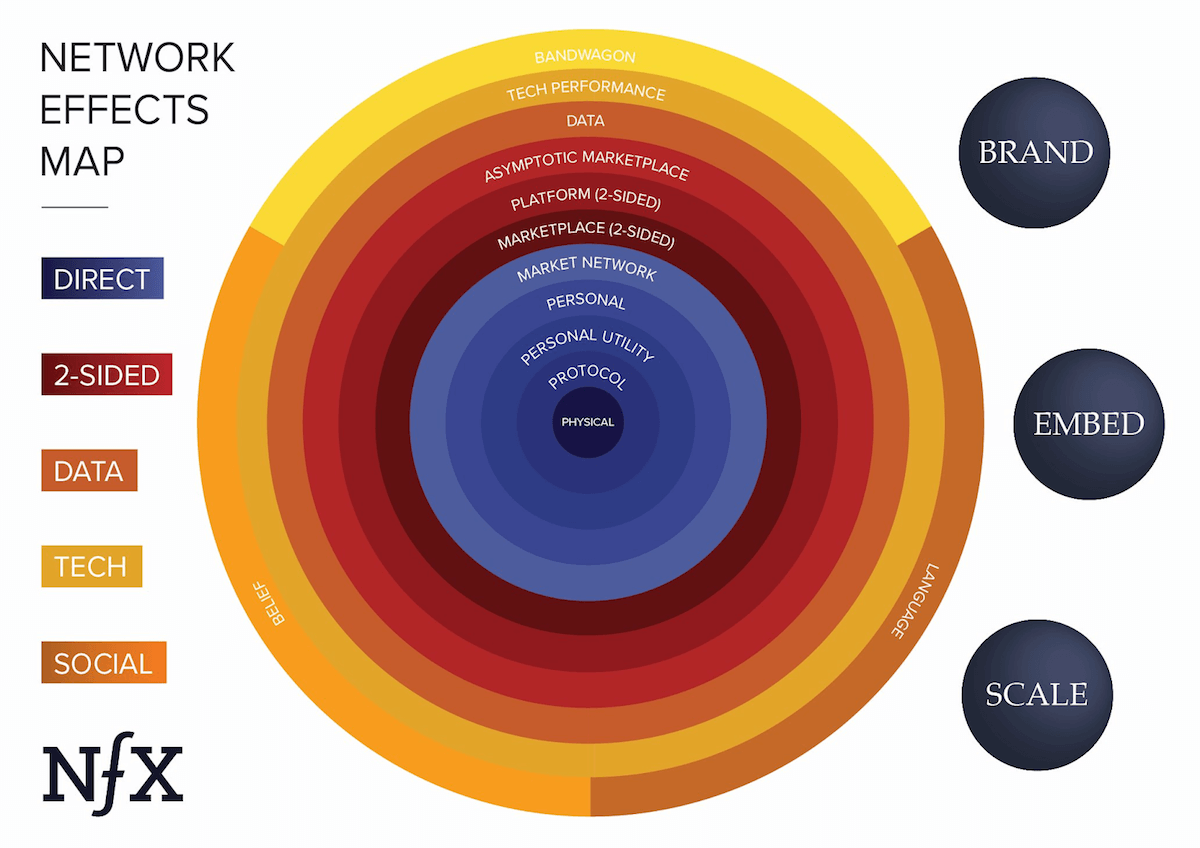Why Network Effects Are Important
Network effects are mechanisms in a product and business where every new user makes the product/service/experience more valuable to every other user.
Network effects are important because they are the best form of defensibility, and thus value creation, in the digital world (the three other major defensibilities are brand, embedding, and scale).
As mentioned above, network effects account for the majority of value created in the technology industry in the past few decades, since many winner-take-all-companies in tech were powered by network effects.
Not all network effects are the same, however, and understanding the nuances is essential for building network effects of your own into your products. Different types of nfx are stronger or weaker than others, and they each work differently. To date we've identified 13 different kinds of network effects. They're listed as follows in order of strength:
- Physical (e.g. landline telephones)
- Protocol (e.g. Ethernet)
- Personal Utility (e.g. iMessage, WhatsApp)
- Personal (e.g. Facebook)
- Market Network (e.g. HoneyBook, AngelList)
- Marketplace (e.g. eBay, Craigslist)
- Platform (e.g. Windows, iOS, Android)
- Asymptotic Marketplace (e.g. Uber, Lyft)
- Data (e.g. Waze, Yelp!)
- Tech Performance (e.g. Bittorrent,Skype)
- Language (e.g. Google, Xerox)
- Belief (currencies, religions)
- Bandwagon (e.g. Slack, Apple)

These network effects already touch, or will soon touch, every industry. Examples of how to apply the Network Effects Map can be found in this Uber case study and in this Facebook case study.